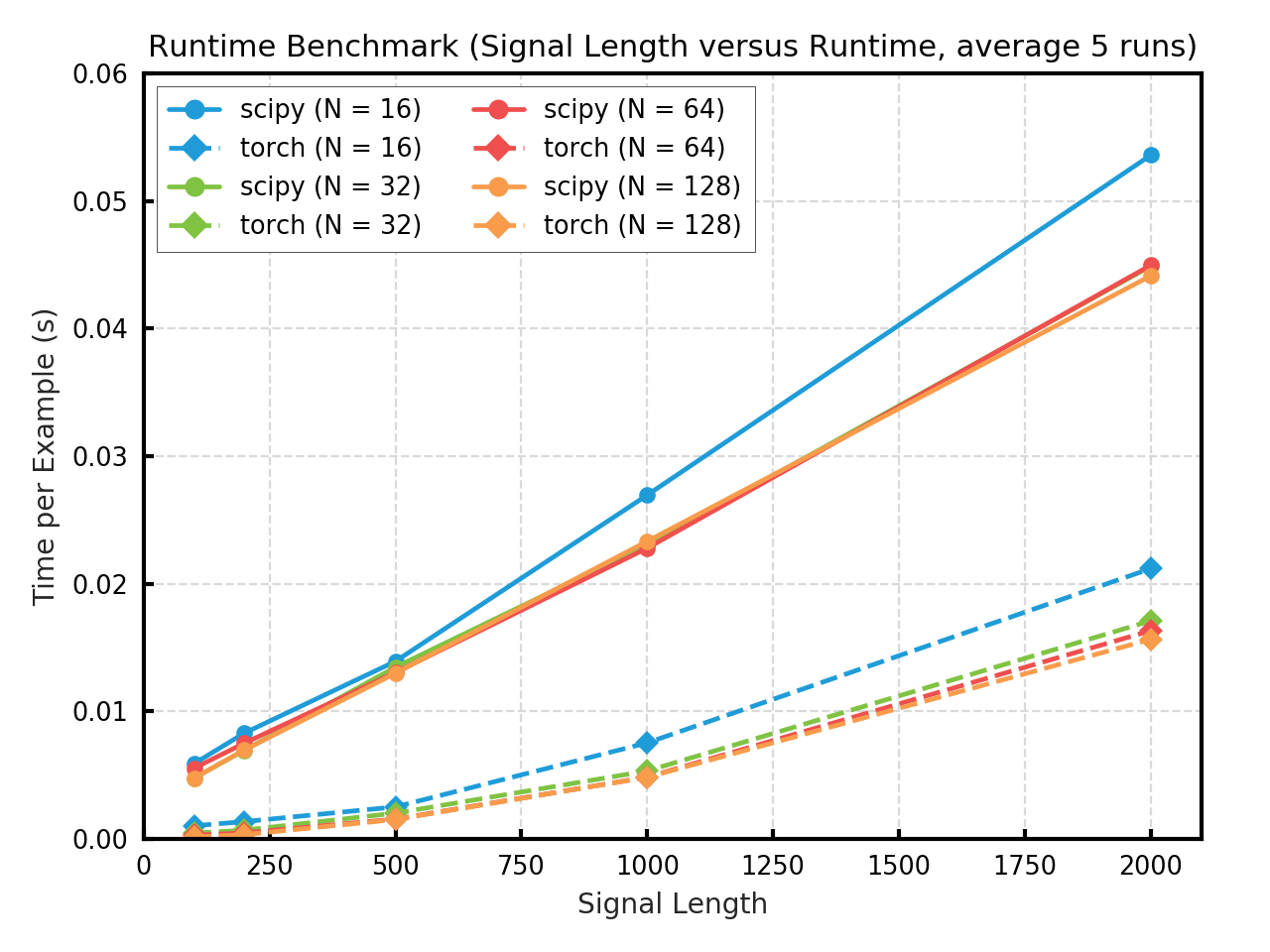tomrunia / Pytorchwavelets
Programming Languages
Projects that are alternatives of or similar to Pytorchwavelets
Continuous Wavelet Transforms in PyTorch
This is a PyTorch implementation for the wavelet analysis outlined in Torrence
and Compo (BAMS, 1998). The code builds upon the excellent implementation
of Aaron O'Leary by adding a PyTorch filter bank wrapper to enable fast convolution on the GPU. Specifically, the code was written to speed-up the CWT computation for a large number of 1D signals and relies on torch.nn.Conv1d for convolution.
Citation
If you found this code useful, please cite our paper Repetition Estimation (IJCV, 2019):
@article{runia2019repetition,
title={Repetition estimation},
author={Runia, Tom FH and Snoek, Cees GM and Smeulders, Arnold WM},
journal={International Journal of Computer Vision},
volume={127},
number={9},
pages={1361--1383},
year={2019},
publisher={Springer}
}
Usage
In addition to the PyTorch implementation defined in WaveletTransformTorch the original SciPy version is also included in WaveletTransform for completeness. As the GPU implementation highly benefits from parallelization, the cwt and power methods expect signal batches of shape [num_signals,signal_length] instead of individual signals.
import numpy as np
from wavelets_pytorch.transform import WaveletTransform # SciPy version
from wavelets_pytorch.transform import WaveletTransformTorch # PyTorch version
dt = 0.1 # sampling frequency
dj = 0.125 # scale distribution parameter
batch_size = 32 # how many signals to process in parallel
# Batch of signals to process
batch = [batch_size x signal_length]
# Initialize wavelet filter banks (scipy and torch implementation)
wa_scipy = WaveletTransform(dt, dj)
wa_torch = WaveletTransformTorch(dt, dj, cuda=True)
# Performing wavelet transform (and compute scalogram)
cwt_scipy = wa_scipy.cwt(batch)
cwt_torch = wa_torch.cwt(batch)
# For plotting, see the examples/plot.py function.
# ...
Supported Wavelets
The wavelet implementations are taken from here. Default is the Morlet wavelet.
Benchmark
Performing parallel CWT computation on the GPU using PyTorch results in a significant speed-up. Increasing the batch size will give faster runtimes. The plot below shows a comaprison between the scipy versus torch implementation as function of the batch size N and input signal length. These results were obtained on a powerful Linux desktop with NVIDIA Titan X GPU.
Installation
Clone and install:
git clone https://github.com/tomrunia/PyTorchWavelets.git
cd PyTorchWavelets
pip install -r requirements.txt
python setup.py install
Requirements
- Python 2.7 or 3.6 (other versions might also work)
- Numpy (developed with 1.14.1)
- Scipy (developed with 1.0.0)
- PyTorch >= 0.4.0
The core of the PyTorch implementation relies on the torch.nn.Conv1d module.
License
MIT License
Copyright (c) 2018 Tom Runia ([email protected])
Permission is hereby granted, free of charge, to any person obtaining a copy of this software and associated documentation files (the "Software"), to deal in the Software without restriction, including without limitation the rights to use, copy, modify, merge, publish, distribute, sublicense, and/or sell copies of the Software, and to permit persons to whom the Software is furnished to do so, subject to the following conditions:
The above copyright notice and this permission notice shall be included in all copies or substantial portions of the Software.
THE SOFTWARE IS PROVIDED "AS IS", WITHOUT WARRANTY OF ANY KIND, EXPRESS OR IMPLIED, INCLUDING BUT NOT LIMITED TO THE WARRANTIES OF MERCHANTABILITY, FITNESS FOR A PARTICULAR PURPOSE AND NONINFRINGEMENT. IN NO EVENT SHALL THE AUTHORS OR COPYRIGHT HOLDERS BE LIABLE FOR ANY CLAIM, DAMAGES OR OTHER LIABILITY, WHETHER IN AN ACTION OF CONTRACT, TORT OR OTHERWISE, ARISING FROM, OUT OF OR IN CONNECTION WITH THE SOFTWARE OR THE USE OR OTHER DEALINGS IN THE SOFTWARE.


